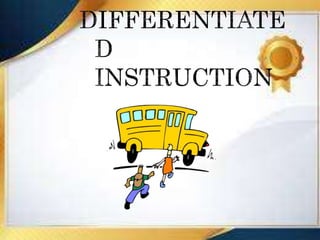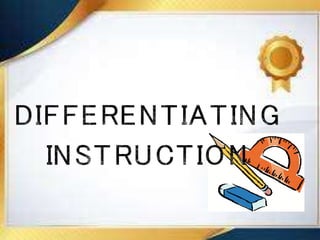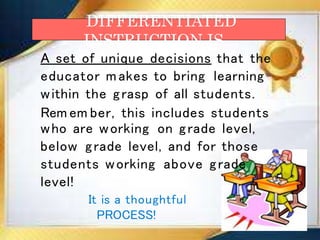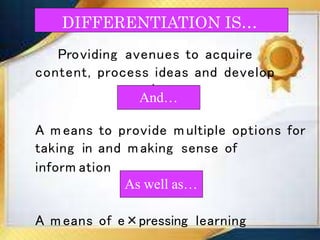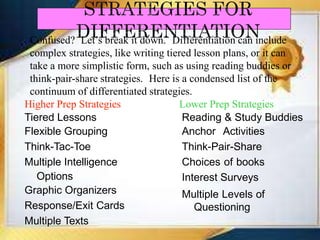This document provides an overview of differentiated instruction. It begins with learner objectives which are to become familiar with differentiated instruction vocabulary, understand how to differentiate content, process and product, and learn strategies to support differentiation. It then discusses key aspects of differentiation like addressing student readiness, interests and learning profiles. Examples of differentiation strategies are provided ranging from tiered lessons to thinking buddies. The document emphasizes that differentiation is a process that respects all students and provides multiple avenues for content acquisition and demonstrating learning.
